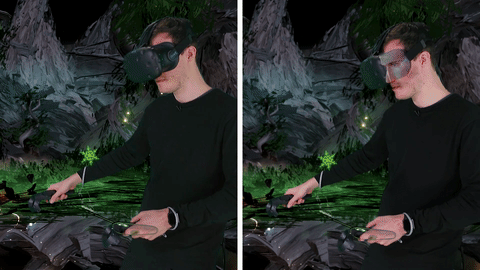
When you’re interacting with someone in a virtual reality (VR) environment, chances are that the best representation you’ll get of them while in VR is an avatar – a static image or a simple graphic representation like a stick figure. Google Research, partnering with Daydream Labs, are trying to make it better for VR users – which is to say, they’re trying to show a better and more accurate representation of people within VR.

Google Research and Daydream Labs have better technology to serve their cause these days – there’s deep machine learning and AI, 3D computer vision, and better hardware for advanced rendering techniques. And through the use of the concept of “mixed reality” – using your VR device’s external cameras to convey what’s happening inside and outside VR – you can now have an environment that’s a mixture of virtual and real world.

Unfortunately, mixed reality renders people together with their VR headsets. So this new technology has now allowed the team to construct a dynamic 3D model of the person’s face, capturing facial variations as they blink or look in different directions. This gives you a better picture of who you’re interacting with and their reactions.

There’s still the “ghost” outline of their VR headsets, but that’s to prevent any “uncanny valley” reactions to the rendered facial image. VR is moving along at a good pace, and we’ll probably get a better version of this technology in 2017.









